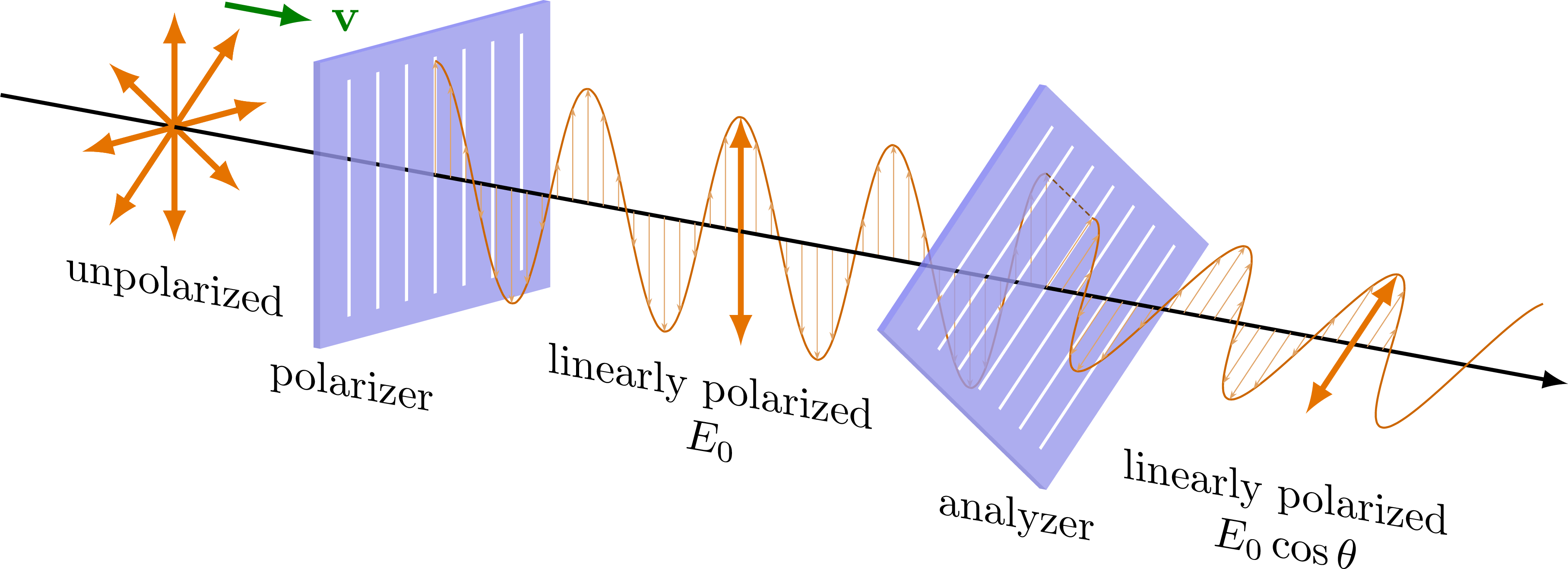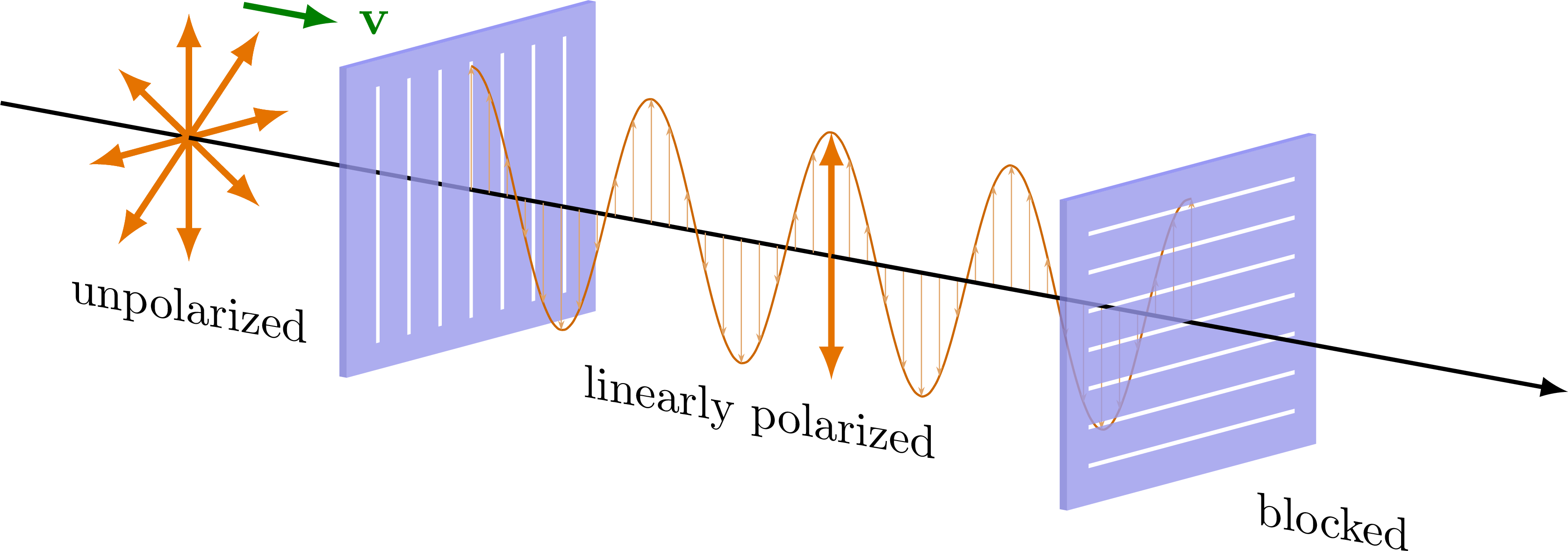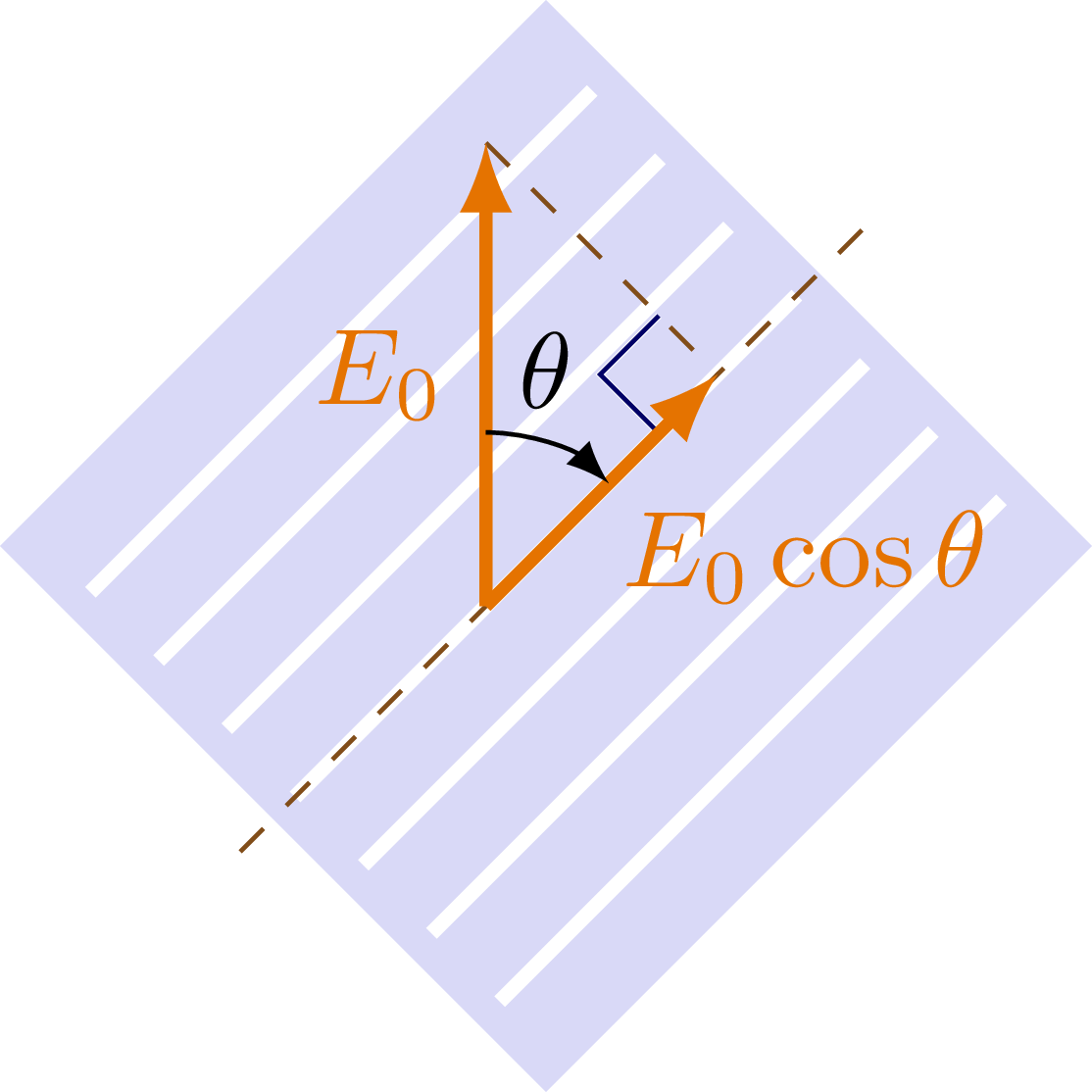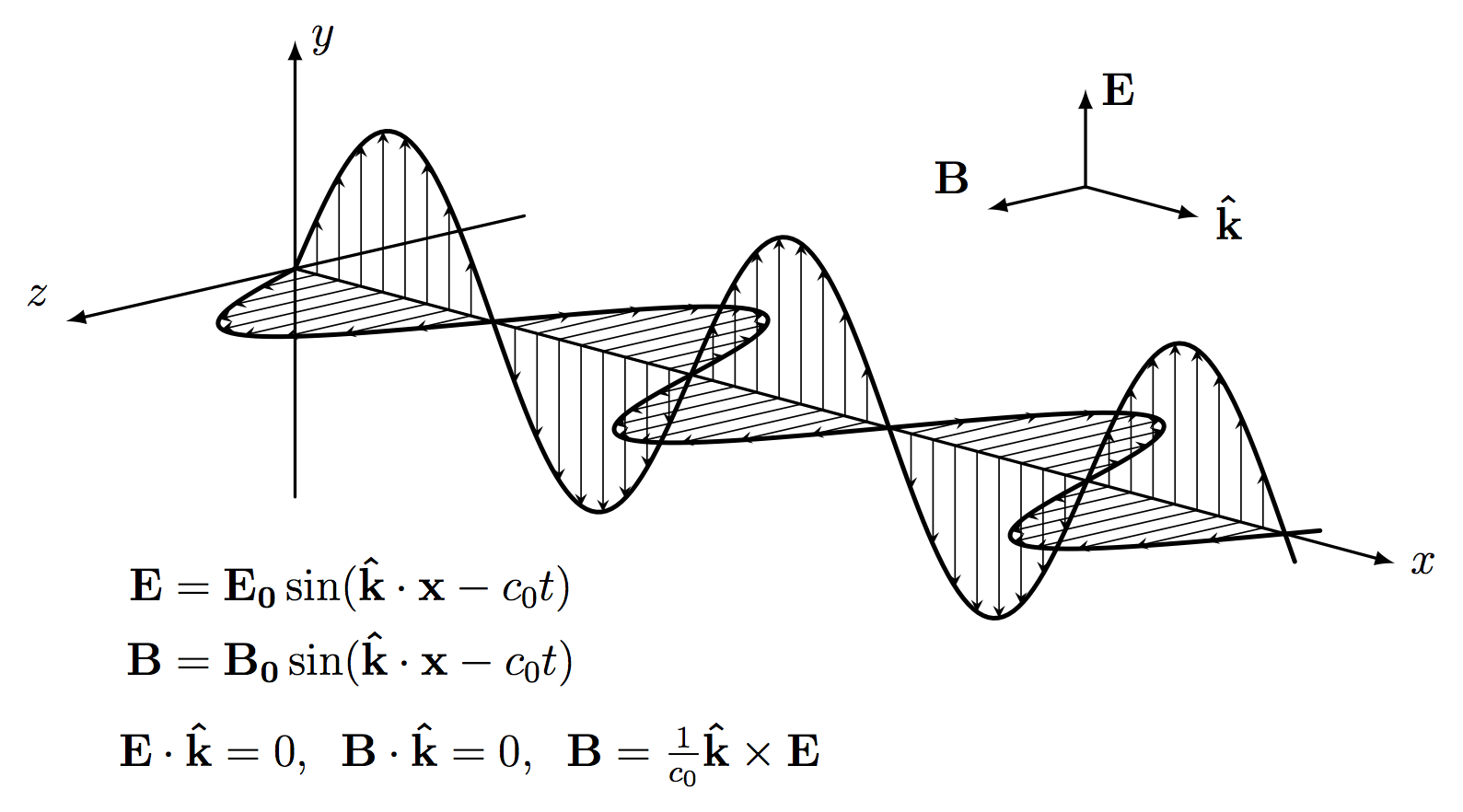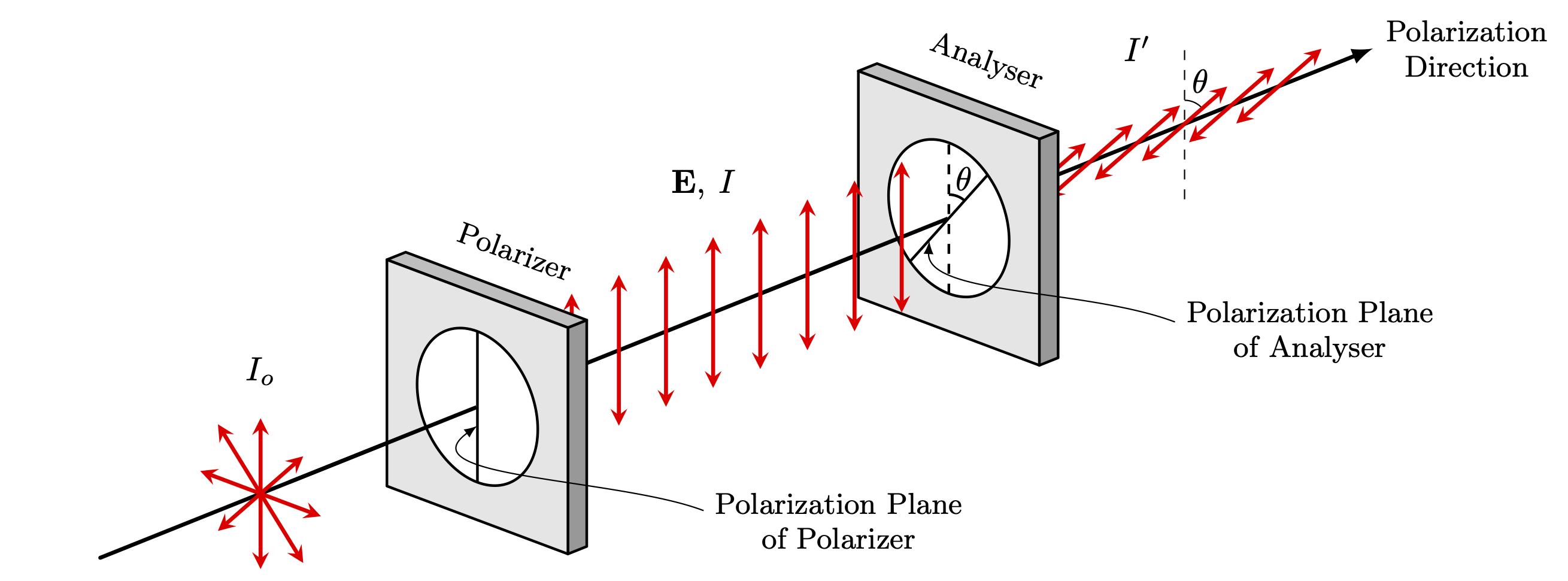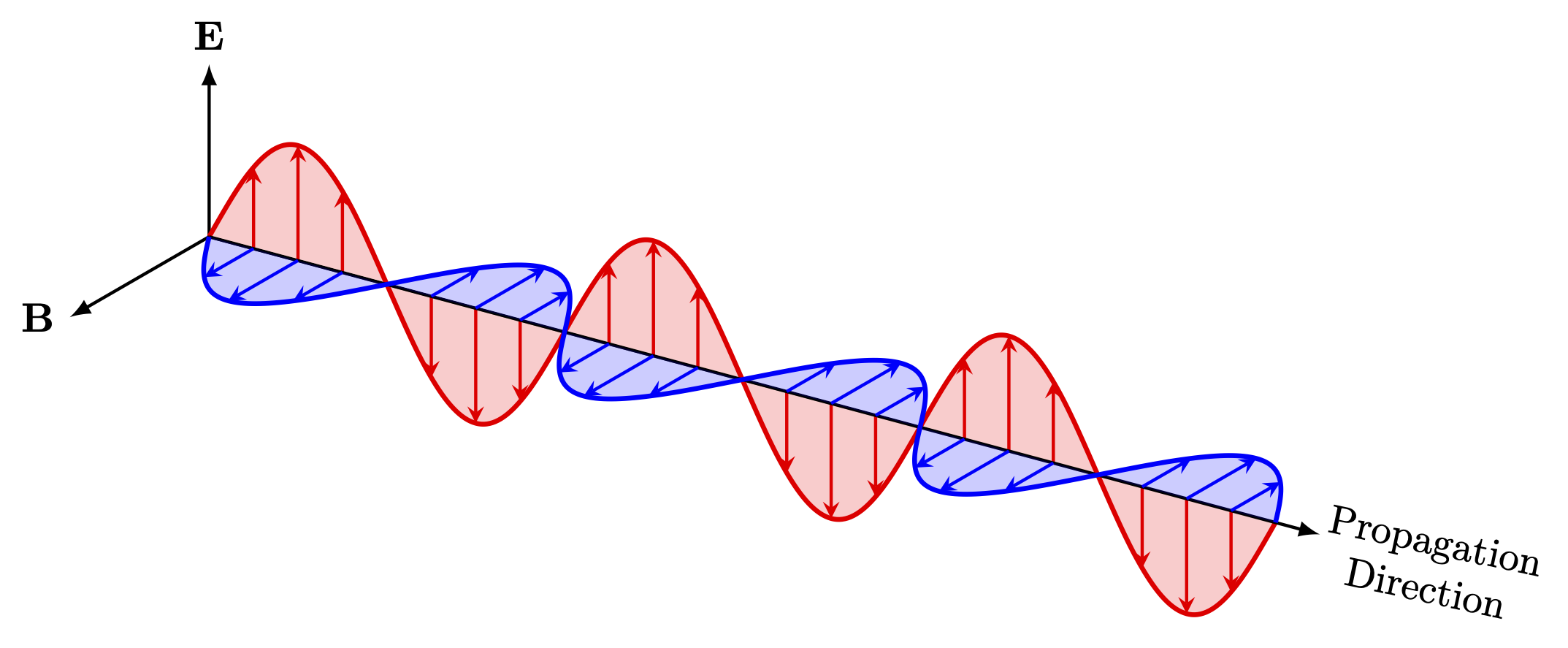Linear polarization of electromagnetic waves, and reducing its intensity (E0cos𝜃) or blocking it completely.
Adapted from this StackExchange post. For more related figures, please see the Optics category. Note that the slits shown here only indicate the direction of polarization, but do not represent physical slits in the polarizer.
Edit and compile if you like:
% Author: Izaak Neutelings (June 2020)% Inspiration:% https://tex.stackexchange.com/questions/113900/draw-polarized-light\documentclass[border=3pt,tikz]{standalone}%\usepackage{amsmath} % for \text\usepackage{tikz}\usepackage{physics}\usepackage{etoolbox} %ifthen\usetikzlibrary{calc}\usetikzlibrary{arrows,arrows.meta}\usetikzlibrary{angles,quotes} % for pic (angle labels)%\input{arrowsnew}%\renewcommand{\familydefault}{\sfdefault}\tikzset{>=latex} % for LaTeX arrow head\newcommand\degree{^\circ}\colorlet{crystal}{blue!75}\colorlet{vcol}{green!50!black}\colorlet{Ecol}{orange!90!black}\colorlet{EWcol}{orange!80!black}\colorlet{EVcol}{orange!80!black!60}\def\zangle{-20}\def\xangle{20}\tikzstyle{platecol}=[blue!80!black!40,opacity=0.8]\tikzstyle{platetopcol}=[blue!90!black!50,opacity=0.8]\tikzstyle{platesidEcol}=[blue!70!black!50,opacity=0.8]\tikzstyle{mydashed}=[dash pattern=on 1.2 off 0.7,line width=0.3]\tikzstyle{Evec}=[EVcol,-{Stealth[length=1.8,width=1.2]},line width=0.2]%\tikzstyle{Evec}=[EVcol,-stealth,line width=0.2]%\tikzstyle{Evec}=[EVcol,-{>[scale=0.2]},line width=0.2]%\tikzstyle{Evec}=[EVcol,-latexnew,arrowhead=1,line width=0.2]% RIGHT ANGLE\newcommand\rightAngle[4]{\pgfmathanglebetweenpoints{\pgfpointanchor{#2}{center}}{\pgfpointanchor{#3}{center}}\coordinate (tmpRA) at ($(#2)+(\pgfmathresult+45:#4)$);\draw[white,line width=0.6] ($(#2)!(tmpRA)!(#1)$) -- (tmpRA) -- ($(#2)!(tmpRA)!(#3)$);\draw[blue!40!black] ($(#2)!(tmpRA)!(#1)$) -- (tmpRA) -- ($(#2)!(tmpRA)!(#3)$);}% POLARIZER
Click to download: optics_polarization.tex • optics_polarization.pdf
Open in Overleaf: optics_polarization.tex


